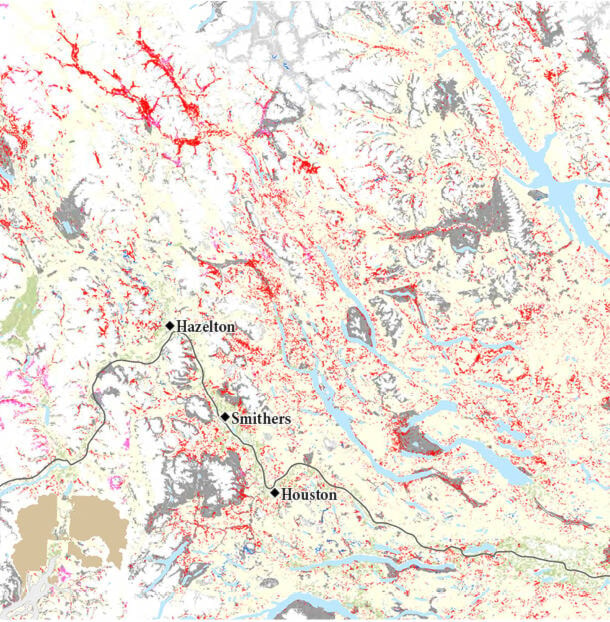While forestry workers in the Bulkley Valley grapple with what may end up being economic impacts of the provincial government’s old-growth deferral program, one of the scientists who sat on a technical analyst panel, says it is important to understand the overarching goal.
Dr. Karen Price, an independent ecologist who lives and works in the Bulkley Valley, was one of the five experts who identified and mapped high-risk old-growth forests across the province for the deferral program.
The panel’s maps were used to identify the specific forests the B.C. government would recommend logging deferrals on last November, in line with recommendation six of the Old Growth Strategic Review.
The Bulkley Timber Supply Area includes approximately 325,000 hectares considered suitable for timber harvesting. Around 33 per cent of this area is old-growth and 16 per cent is included in the recommended deferrals.
For the Bulkley Valley, the recommended deferrals include old-growth growing within the Engelmann Spruce-Subalpine Fir (ESSF) and Sub-Boreal Spruce (SBS) biogeoclimatic zones.
These zones are widespread throughout the valley. Price recommends taking a walk along the Little Joe Trail in Babine Mountains Provincial Park to see an ESSF area not included in the recommended deferrals.
Price stressed that the proposed deferrals are not protection, but simply a pause.
On the foundation of the report, B.C. Timber Sales halted advertising and sales of areas that overlapped with the province’s 2.6 million hectares recommended for deferral.
However, existing tenures continue to be logged, while First Nations decide how much of the remaining recommended deferrals will be implemented.
“We hope there will be trees standing… to allow collaborative land-use planning that can decide which of these areas do we want to put into protection and which don’t we,” Price said, adding the deferrals provide breathing space for collaboration.
Price said she would have rather seen the deferrals implemented while First Nations decided whether to opt-out rather than maintain business as usual and have them decide whether to opt-in.
Nevertheless, she said the deferrals are just one step toward the more important long term goal covered by recommendations one and two of the report: engaging the full involvement of Indigenous leaders and organizations in policy and strategy development and implementation; and shifting forest management policy to conservation of ecosystem health and biodiversity of forests as an overarching priority.
There are forests with old trees across the province in a multitude of biogeoclimatic zones, all with unique qualities. The Old Growth Strategic Review report outlines that some of the values found in forests with big trees include resistance to fire, high carbon storage and sequestration capacity, and conditions and processes that are important to the conservation of biodiversity.
“It’s pretty awesome we were able to have this level of input,” Price said. “When [the B.C. government] hired us, they hired scientists to make a science-based decision.”
When decisions are made on which areas will be protected, the provincial government has said it will support impacted forestry sector workers with programs such as temporary employment, retraining or a bridge to retirement.
The new B.C. Budget includes $185 million over three years toward those programs although the details will not be decided until decisions are made on which deferrals will become permanent.
- With files from Thom Barker
